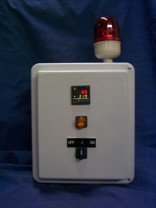Methods of Heat Transfer
As discussed earlier heat is transferred from a higher to a lower temperature.
Heat also flows in all directions unless channeled controlled or directed. The rate of heat transfer
depends on the physical caracteristics of the heating equipment used, the medium used to
transfer heat, and the temperature difference between the source of the heat and the substance
to which the heat is imparted.
There are three methods of heat transfer: conduction, convection, and radiation.
Heat is transferred by conduction when the heat source is in direct contact with
the object to be heated. For example, a pan placed on a hot stove changes temperature rapidly
by conduction. The pan is in direct contact with the hot stove and the better the contact with
the stove the faster the temperature conducts into the pan. Conduction occurs in liquids,
solids and gases.
Heat is transferred by convection when the warmer and cooler molecules of liquid
or gas mix with one another. This mixing action can occur soley due to
differences in temperature (natural convection). For example,
heat generated by a strip heater causes molecules in the air around the heater to move faster, in turn causing
the air to expand. Because the heated air contains fewer molecules than coolerr air per
given volume, the heated air is lighter and therefore rises. Simular to your fireplace
chemmey. As it rises it mixes with cooler air. Mixing can be accelerated by using a fan
or other mechanical means (forced convection).
Heat is transferred by radiation as substances emit and absorb radiant energy,
that is, heat which is transferred through space in the form of electromagnetic waves.
Heat energy is transformed into radiant energy at the surface of a heater. It then passes
through the surrounding space and transparent objects until it contacts a a non-reflecting
opaque substance with a cooler surface temperature which converts the radiant energy to heat
energy.
All process heating applications use one or more of the heat transfer methods above.
For example, an immersion heater inside a tank heats liquids by conduction between the liquid
and the heater, and by convection as the warmer liquid mixes with the cooler. An oven
which employs strip heaters heats objects by conduction, convection and radiation.
|


